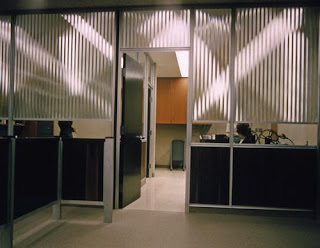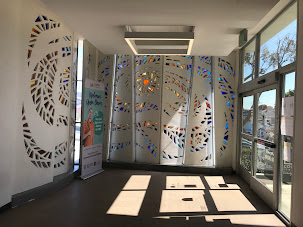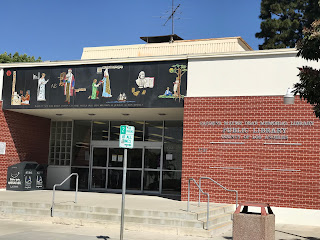Los Angeles Times May 15, 1942
Los Angeles Public Library 1941-1942 annual report
Within two weeks of the bombing of Pearl Harbor the Los Angeles Public Library opened their Wartime Information Desk, centrally located in the lobby off of Fifth Street. The desk would "disseminate information on national defense" and anything pertaining to World War II. Its earliest name, according to the Los Angeles Times was the Citizens' Bureau of Information. The library had thought about providing a similar service for a few months but Municipal Reference librarian (stationed at City Hall) Josephine Hollingsworth convinced Althea Warren that, after December 7, 1941, they was receiving far too many reference questions to keep up with. Ms. Warren put the Wartime Information Desk in the hands of principal librarian Margaret Gabriel Hickman who had been the head of the foreign language department since 1928. The 1942 library annual report lists an organizational chart that mentions that Wartime Information Desk personnel were taken from other library departments. Staffing the desk was supplemented by Work Project Administration (WPA) and National Youth Administration (NYA) workers.
Los Angeles Daily News December 17, 1941
The Wartime Information Desk averaged 300 questions a day with another 100 arriving via letters received weekly. Throughout much of 1942 and into 1943 the library had a frequent column called "War Queries" in the Los Angeles Daily News answering some of the questions. These included queries about military service, defense jobs, Victory Garden information, and V-mail.
Los Angeles Daily News December 19, 1941
Los Angeles Daily News, December 1942
The desk was ended in October 1943 because the public by then was better educated on the workings of the war (specifically rationing, the draft, and housing), and the efforts turned towards veteran's vocational training. The clipping files, pamphlets and indexes from the Wartime Information Desk were deposited with the Sociology Department (are they still there?).







































